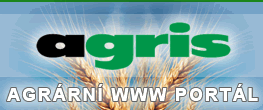BOTANICAL COMPOSITION OF PASTURE STAND AFTER SECOND YEAR UNDER CONTINUAL GRAZING OF HEIFERS
09.12.1999 | Odborné konference
BOTANICKÉ SLOŽENÍ PASTEVNÍHO POROSTU PO DRUHÉM ROCE PASTVY PŘI KONTINUÁLNÍM SPÁSÁNÍ JALOVICEMI
Dalibor Auf1, Vilém Pavlů2, Jiří Mrkvička1
1Czech University of Agriculture in Prague,
2Institute for Agricultural and Food Information Prague, Grassland Research Station Liberec
Summary
Change of a pasture stand composition has been observed in foot-hills area near the Jizerské mountains in landregister Oldřichov from the year of 1998. The area were not used for farming for 2 years. There was high share of withered biomasy there. Experimental plots are on 3 ha area and they are divided to variants with extensive, intensive using and control plots. Half of variants are used only for grazing and the rest for 1 cut followed with grazing. There are two repetitions in each variant. The pasture is grazed continuously with young heifers from the beginning of May to the end of October. The dominant species are common bent Festuca rubra L., Agrostis capillaris L., Alopecurus pratensis L..The method of projective dominance composition is used for the valuing of the stand. During two years is possible to record increasing of stand composition diversity.
pasture, grass, legumes, species diversity
Souhrn
Od roku 1998 je na podhorské pastvině v Jizerských horách v katastru obce Oldřichov sledována změna druhového složení porostu. Pokusné plochy se rozkládají na ploše 3 ha a jsou rozděleny na varianty s extenzívním a intenzívním využíváním a kontrolní plochy. Polovina variant je pouze spásána a polovina je kosena s následnou pastvou. Pastvina je spásána kontinuálně mladými jalovicemi od začátku května do konce října. Dominantními druhy v porostu jsou kostřava červená L., psineček tenký L., psárka luční L. Druhové složení je hodnoceno metodou projektivní dominance. V současnosti je možné zaznamenat zvýšení druhové diverzity především u dvouděložných rostlinných druhů.
pastvina, trávy, jeteloviny, druhová diverzita
Introduction
Pastures occupied 30 % of permanent grass stands in the Czech Republic in the year 1998. In presuppose of permanent grassland area increasing, which is caused by restriction of intensive farming on arable land in foot-hills increasing of pastures areas is presupposed. The development of pasture areas is limited by falling number of cattle and sheep in those regions. The sward structure in the Czech Republic has been studied only on a meadow by e.g. Rychnovská et. al. (1987, 1993).
Material and methods
Change of a pasture stand composition has been observed on an area on Southwest border of the Jizerské mountains in landregister Oldřichov from the year of 1998. The plots have Southeast exposition, in average 420 m above sea level, average annual amount of precipitation is 918 mm. The plots are found on mesophytum, which we could define as union of Arrhenatherion (Moravec et al., 1983). Experimental plots are on 3 ha area and they are divided to variants with extensive, intensive using and control plots. Half of variants are used only for grazing and the rest for 1 cut followed with grazing. There are two repetitions in each variant. Four squares (1m2) are located in each plot (variant and repeating) for determining of abundance and dominance of the species. The extensive variants are grazed to minimal height 100 mm and the intensive variants to the height 50 mm. The pasture is grazed continuously with young heifers from the beginning of May to the end of October. The method of projective dominance composition is used for the valuing of the stand.
Results
The total number of plant species (graph 1) was increased on observe pasture already after the first year of grazing. Important increase was found mainly in dicotyledonous plants, mainly in the intensive variants. 52 species of plants were found.
Conclusion
Species diversity increased on observed plots already after the first year of continual grazing and combination of cutting and grazing. It relates especially the dicotyledonous plants in the stand. It is necessary to collect longer time series for determining of grass association development.
This research is supported by GA ČR (reg. č. 521/98/1321)
Literature
Rothmaler, W., Schubert, R. et Vent, W., 1990: Exkursionflora von Deutschland, Band 4 Kritische band, Volk und Wiessen Verlag, Berlin, pp. 812.
Frame, J., 1992: Improved Grassland Management. Farming Press Books, Ipswich, pp. 351
Rychnovská, M. et al., 1987: Metody studia travních ekosystémů, Academia, Praha, pp. 272.
Address of the authors:
Ing. Dalibor Auf
Doc. Ing. Jiří Mrkvička, CSc.
Department of Forage Crops Production
Faculty of Agronomy, University of Agriculture in Prague
Praha 6 - Suchdol, 165 21, The Czech Republic
Dr. Ing. Vilém Pavlů
Institute for Agriculture and Food Information Prague
Grassland Research Station Liberec
Rolnická 6, Liberec 11, 460 11, The Czech Republic
Graph Average number of species on the stands in the years 1998 and 1999

I - intensive grazing | A - Number of plant species with dominance more than 1% | ||||||
E - extensive grazing | B - Number of plant species with dominance less than 1% | ||||||
N - control variant | - | - | - | - | - | - | - |
Další články v kategorii Zemědělství
- Ve Stálkách na Znojemsku postaví zemědělci šest nových hal pro chov brojlerů (19.12.2025)
- Dohoda EU s Mercosurem o obchodu se odkládá na leden, uvedla von der Leyenová (19.12.2025)
- Německo a Španělsko vyzvaly lídry EU k podpoře dohody s Mercosurem (19.12.2025)
- Opakované demonstrace zemědělcům dobré jméno neudělají (19.12.2025)
- V Bruselu protestují tisíce zemědělců proti zemědělské politice EU (19.12.2025)
- Projekt Hlídače státu: Agrofert má i přes Babišův střet zájmů zakázky od státu (19.12.2025)
- Itálie a Francie jsou proti rychlému schválení a podpisu dohody Mercosur (18.12.2025)
- Čí zájmy hájí premiér Babiš na jednání Evropské rady k rozpočtu? Naší země, nebo svého agroholdingu? (18.12.2025)
- Evropský parlament schválil odklad nařízení o odlesňování o další rok (18.12.2025)
- Řečtí zemědělci pokračují v blokádách i po příslibu více peněz (18.12.2025)

 Tweet
Tweet





